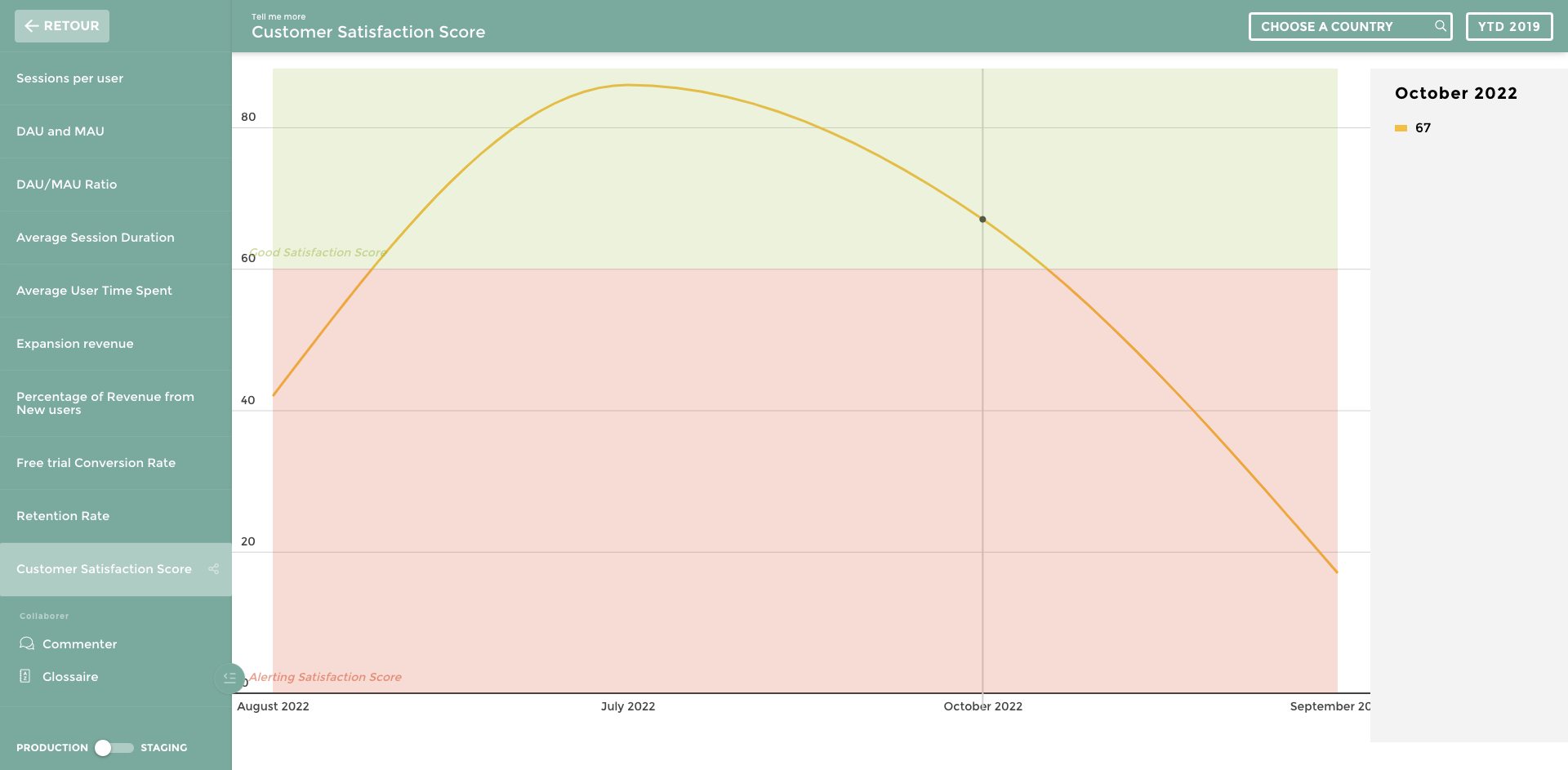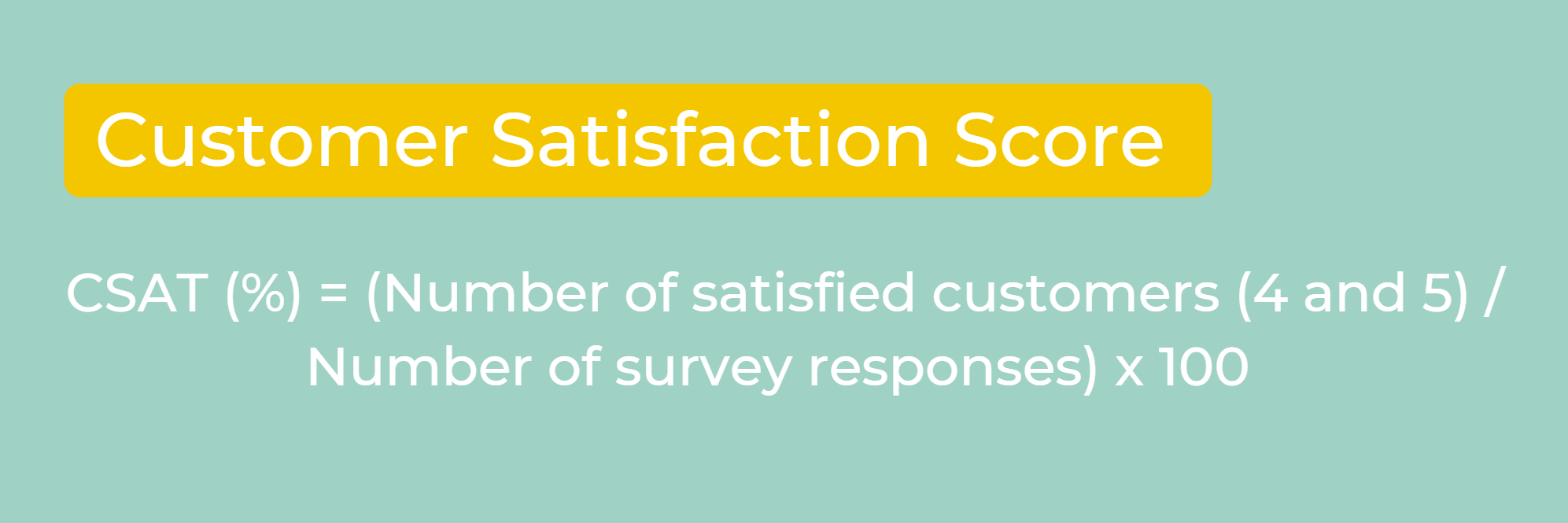Customer Satisfaction Score - What is it?
Customer satisfaction score (CSAT) is a metric that indicates the quality of a product and its customer service team. Although customer service as an idea is quite general, CSAT gives customer service teams a tangible metric that provides feedback and insights.
CSAT is usually found by asking a variation of the question:
"How would you rate your satisfaction with (goods/service)?"
Businesses can find their average CSAT and dive into diagnosing weaknesses to improve upon by asking this question on various channels, including a company website, pop-up advertisements, and surveys.

How is CSAT Measured?
CSAT is quite a reliable metric, since it takes feedback directly from the consumer. Although a percentage of your users may have a bias, your CSAT will indicate approximately how satisfied your customers or end users are with your product.
The most common way to measure CSAT is with a scale of 1-5:
- Very unsatisfied
- Unsatisfied
- Neutral
- Satisfied
- Very satisfied
After enough customers have responded to your prompt, the results can be averaged out to give you a CSAT, although they are more commonly expressed as a percentage. To calculate CSAT as a percentage, use the following formula:

Differences Between CSAT and Net Promoter Score
These two metrics are often mentioned together and at first glance, you may think they're the same. However, each metric offers insights into two separate areas: CSAT measures customer satisfaction while NPS measures brand loyalty.
CSAT draws on feedback in the present, asking the customer how they feel about a product in the here and now. While it is good to know a customer's single experience with your company's product or service, CSAT does not offer insight into your customers' ongoing relationship with your company.
For this reason, it's beneficial to monitor CSAT with NPS. NPS asks the question: "How likely are you to recommend (product/service) to a friend?" Your customers' feedback will give your product team a better idea of how they interact with your brand, revealing consumer intentions rather than emotion.
It is important to keep track of consumer complaints, including feedback on company forums and social media platforms, as well as direct communications between the consumer and the company. Understanding what the problems are and when they happen allows your company to contact developers and update your product as quickly as possible.
Why is CSAT Important?
CSAT is a vital metric for understanding your consumers' feelings about a product or service. Generating a CSAT can help avert disaster if consumers feel dissatisfied with your product. However, CSAT must be tracked in tandem with NPS to monitor consumer satisfaction and loyalty. Understanding these two areas can be telling, and product managers can act to either improve a weakness or continue solidifying strengths,
It is important to create a product dashboard that delivers error-free data in real time to draw the most out of your CSAT and NPS data. Ultimately, if your data is not understandable for your end users, it will be difficult for your team to act.


.png?width=710&name=CTA%20Template%20%E2%80%94%20Free%20Trial%20(2).png)